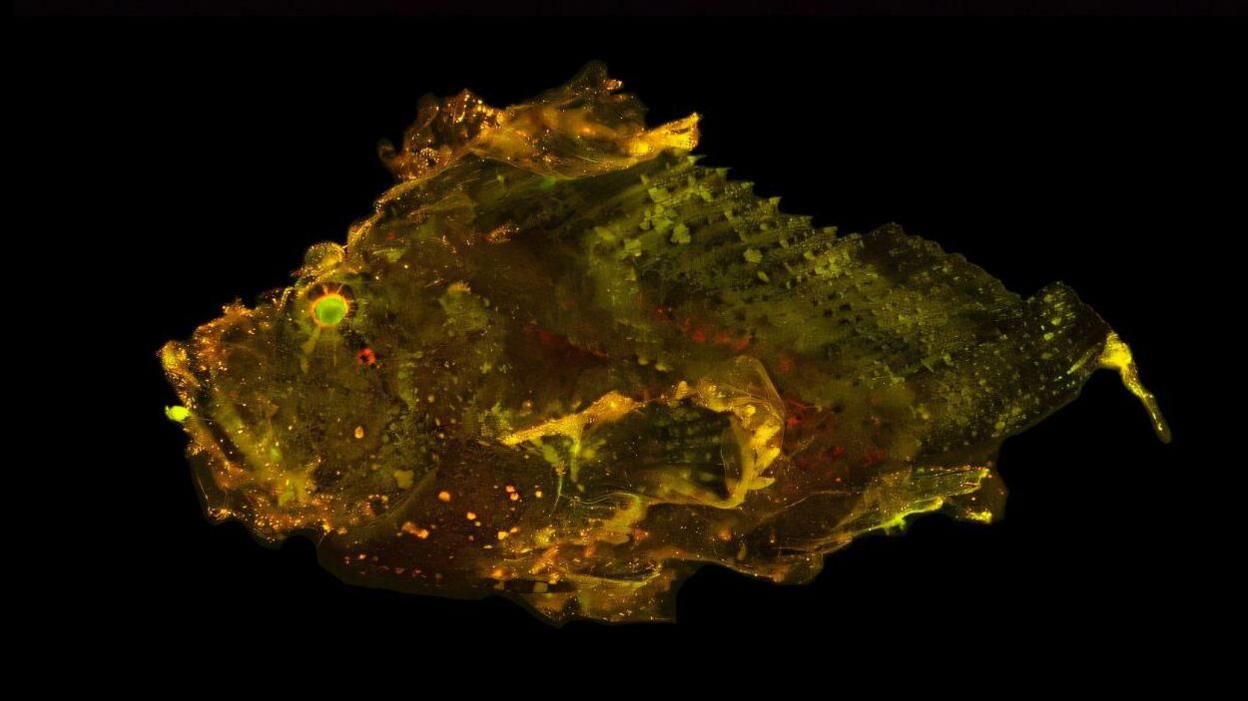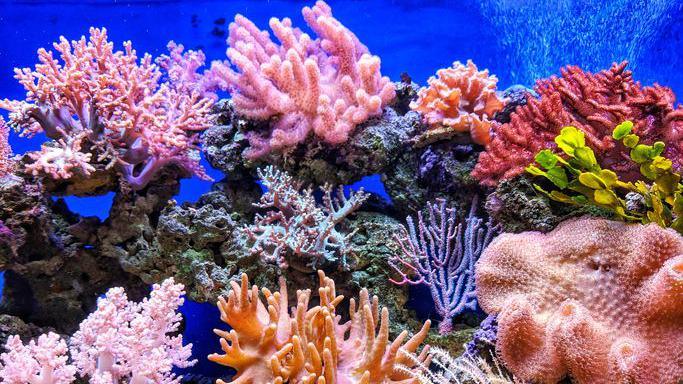Glowing fish could be communicating with each other

Fish like this ochre-banded goatfish (Upeneus sundaicus) can glow under certain lights
- Published
Did you know that some fish can glow with different colours?
This special ability is called biofluorescence and scientists have now found it dates back over a hundred million years.
Two new studies led by scientists at the American Museum of Natural History also found that there are more colours of biofluorescence than previously thought - and more species with this power.
The authors also suggest this huge variation of colours and patterns could mean the fish are using the glow to communicate with each other.
Why have scientists made glow in the dark plants?
- Published30 April 2020
How does this see-through fish turn into a rainbow?
- Published22 March 2023
Glow in the Shark! Luminescent creatures discovered
- Published6 March 2021

A leaf scorpionfish (Taenianotus triacanthus) is a biofluorescent species
Biofluorescence is where a living organism can absorb light before letting it out again. The result is the creatures seem to glow with different colours and even patterns.
It is different to bioluminescence which is when the creatures create the light inside themselves and so can glow in total darkness.
The researchers produced a list of 459 biofluorescent species, including 48 species that were not previously known to be biofluorescent.
They also estimated the biofluorescence dated back about 112 million years, with the first instance happening in eels.
The team also found that fish species that live in or around coral reefs evolve biofluorescence faster than those that live outside of the reef.
Most of the species studied were associated with coral reefs.

Most of the biofluorescent fish studied were associated with coral reefs.
The researchers found there was a sharp increase in glowing species after the dinosaurs became extinct 66 million years ago.
This was also when there was a rise of modern coral-dominated reefs which the study authors say could explain the sudden surge of biofluorescence.
For the second study, published in PLOS One, the scientists looked at fish they already knew were biofluorescent under special lights.
The researchers were surprised by the range of colours with some species giving out several colours and patterns.
